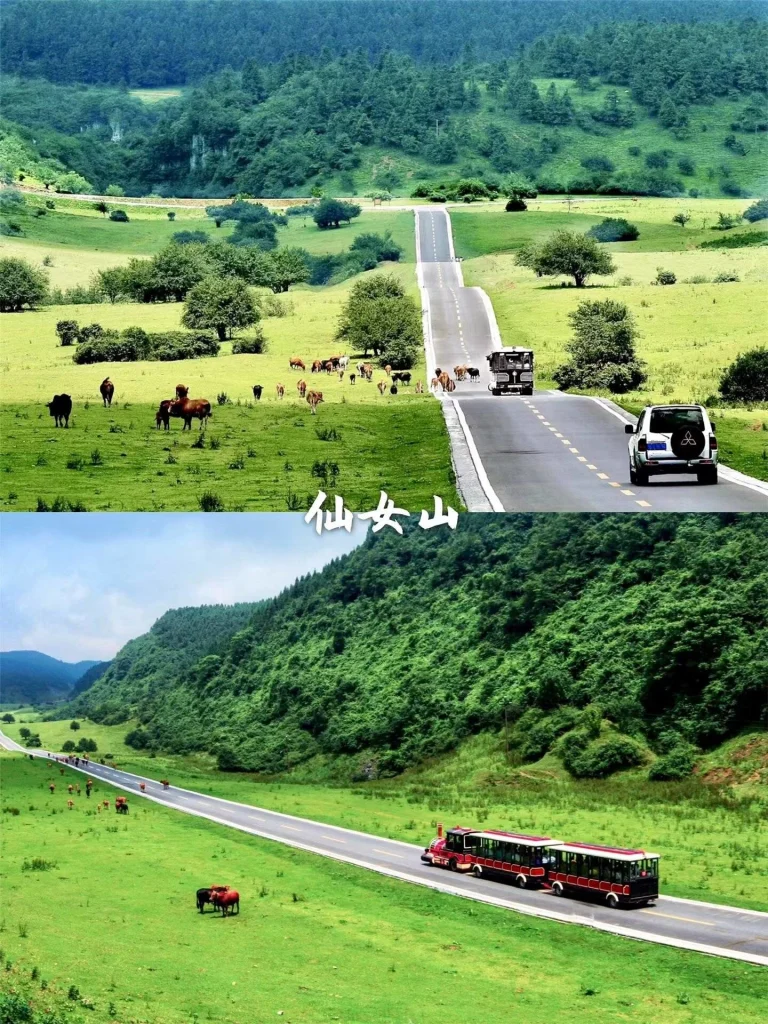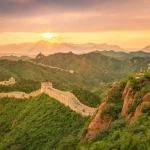Chongqing City, abbreviated as “Yu” and also known as the “Mountain City” and “River City,” is a municipality directly under the Central Government of the People’s Republic of China and a megacity. It is designated as a national central city, an important central city approved by the State Council, a renowned national historical and cultural city, and an international comprehensive transportation hub. Chongqing serves as a national advanced manufacturing base, a western innovation center for science and technology, a gateway for opening-up, and a shipping hub on the upper reaches of the Yangtze River. It is also a western financial center, an international consumption center city, and administers 38 districts and counties, covering a total area of 82,400 square kilometers. By the end of 2024, Chongqing had a permanent resident population of 31.9047 million.
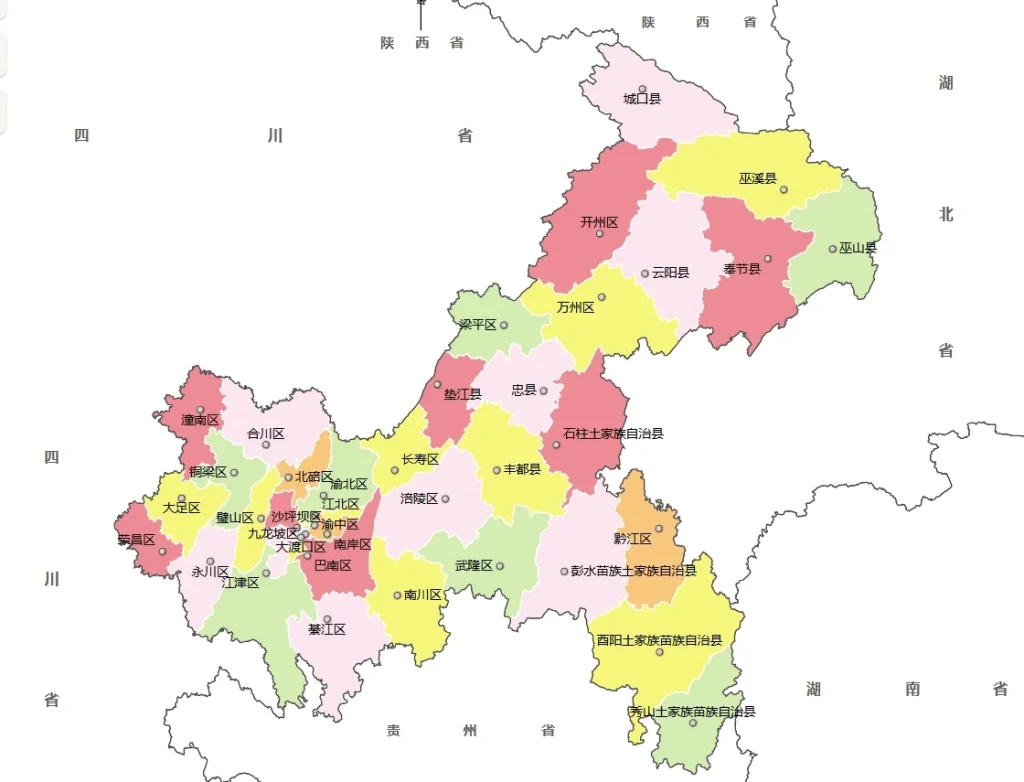
Located in southwestern China, Chongqing is the nation’s only city integrating five types of national logistics hubs: water, land, air, production services, and commercial services. It plays a pivotal role in supporting the Western Development Strategy, driving the Belt and Road Initiative, and demonstrating progress in the Yangtze River Economic Belt. The city boasts world-class heritage sites, including the Dazu Rock Carvings, Wulong Karst, and Nanchuan Jinfo Mountain.
Chongqing is the birthplace of Bayu culture, with a history of urbanization spanning over 3,000 years, earning it the ancient name “Heavenly Chongqing.” During the Song Dynasty, Emperor Guangzong first enfeoffed the Prince of Gong and later ascended the throne, elevating Gongzhou to Chongqing Prefecture, hence its name. The ancient Ba State established its capital here during the Xia and Shang dynasties, and the Great Xia Dynasty was founded here in the late Yuan Dynasty. In modern history, Chongqing’s port opening and its role as the wartime capital of the National Government during the late Qing Dynasty and Republic of China era cemented its status as the political, military, economic, and cultural center of China’s rear base. After the founding of the People’s Republic of China, Chongqing served as the headquarters of the Southwest China Administrative Region and a municipality directly under the Central Government, a status it regained in 1997.
Chongqing is a model mountainous city in China, the “World Capital of Hot Springs,” and the “Hotpot Capital.” It hosts the Chengdu-Chongqing Financial Court and was the inaugural city for the China-Europe Railway Express. As of 2022, the city is home to 964 research and development platforms and 73 higher education institutions.
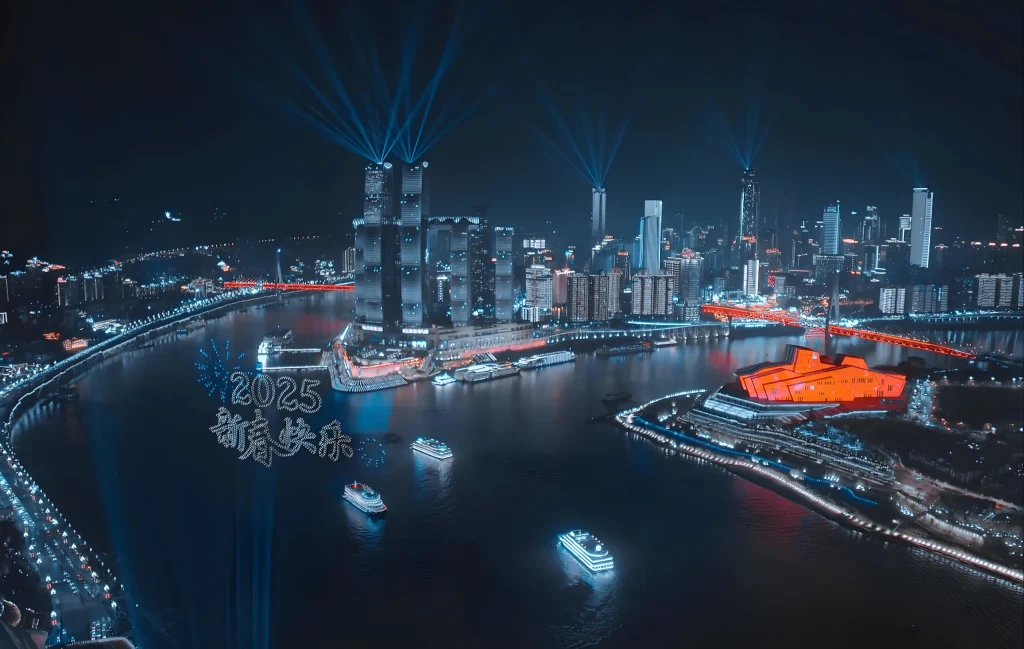
Geographical Location
Chongqing City is situated in southwestern China, in the upper reaches of the Yangtze River, straddling the transitional zone between the Qinghai-Tibet Plateau and the Yangtze River Midstream-Downstream Plains. Its coordinates span east longitude 105°11’–110°11′ and north latitude 28°10’–32°13′. It borders Hubei and Hunan to the east, Guizhou to the south, Sichuan to the west, and Shaanxi to the north. The municipality stretches 470 kilometers from east to west and 450 kilometers from north to south, covering a total area of 82,400 square kilometers.
Topography and Landforms
Chongqing is surrounded by mountain ranges: the Daba Mountains to the north, the Wushan Mountains to the east, the Wuling Mountains to the southeast, and the Dalou Mountains to the south. The elevation of Chongqing’s main urban area ranges from 168 to 400 meters above sea level. The highest peak is Yintiaoling on the border of Wuxi County’s Jieliang Mountain, at 2,796.8 meters, while the lowest point is the Yangtze River surface in Wushan County, at 73.1 meters, creating an elevation difference of 2,723.7 meters. The terrain is characterized by steep mountains, deep valleys, and rugged gorges, with 76% mountainous areas, 22% hills, and only 2% river valleys and plains. Specifically:
- Areas below 500 meters elevation cover 31,800 square kilometers (38.61% of the total).
- Areas between 500–800 meters elevation cover 20,900 square kilometers (25.41%).
- Areas between 800–1,200 meters elevation cover 16,800 square kilometers (20.42%).
- Areas above 1,200 meters elevation cover 12,800 square kilometers (15.56%).
The topography slopes downward from north and south toward the Yangtze River valley. The northwest and central regions are dominated by hills and low mountains, while the southeast relies on the Daba and Wuling mountain ranges, earning Chongqing its nickname “Mountain City.” Overall, the elevation is higher in the southeast and northeast, lower in the central and western regions, and gradually descends toward the Yangtze River valley.
Chongqing’s landforms exhibit four key features:
- Significant Elevation Fluctuations: The eastern, southern, and southeastern regions are elevated, while the western areas are lower. The highest point is Chuan’e Ridge in the Daba Mountains, and the lowest is the Yangtze River surface in Wushan.
- Diverse Landform Types: Predominantly mountainous, it includes eight categories: medium mountains, low mountains, high hills, mid-hills, low hills, gentle hills, tablelands, and plains.
- Regional Differentiation: West of Huaying Mountain–Bayue Mountain lies hilly terrain; between Huaying Mountain and Fangdou Mountain is a parallel ridge-valley zone; the north is mountainous (Daba Mountains); and the east, southeast, and south fall under the Wushan and Dalou mountain ranges.
- Extensive Karst Landscapes: Distinctive karst trough-valley features are prevalent, including stone forests, peak clusters, depressions, monadnocks, caves, underground rivers, gorges, and Tiankeng-Dixiafeng (giant sinkholes and fissures).
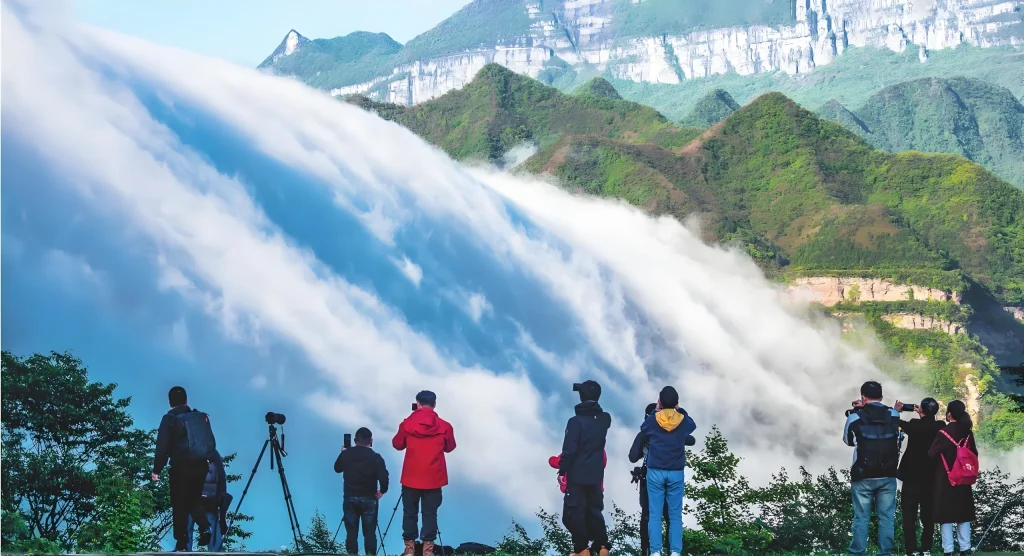
Climate
Chongqing has a subtropical monsoon humid climate, with an average annual temperature ranging from 16°C to 18°C. In areas like Banan, Qijiang, and Yunyang along the Yangtze River valley, temperatures exceed 18.5°C, while in southeastern regions such as Qianjiang and Youyang, they range from 14°C to 16°C. Chengkou, in the northeastern highlands, averages just 13.7°C. The hottest months see average temperatures of 26°C to 29°C, and the coldest months average 4°C to 8°C. The four seasons are distinctly defined using the accumulated temperature method.
The average annual precipitation is abundant, with most areas receiving 1,000–1,350 mm. Precipitation is concentrated from May to September, accounting for approximately 70% of the annual total.
Chongqing has high humidity, with an annual average relative humidity of 70%–80%, placing it among China’s most humid regions. Annual sunshine hours range from 1,000 to 1,400, with a sunshine percentage of only 25%–35%, making it one of China’s least sunny areas. Sunshine is particularly scarce in winter and spring, contributing to only about 35% of the annual total.
Key climatic features include:
- Distinct Seasons: Warm winters, early springs, hot summers, and cool autumns, with a long frost-free period.
- Humid and Rainy: Ample rainfall and high humidity.
- Weak Solar Radiation and Short Sunshine Hours: Frequent cloud cover, with limited frost and snow.
- Synchronized Light, Temperature, and Water: Pronounced three-dimensional climate due to varied terrain, rich climatic resources, and frequent meteorological disasters.
Influenced by its topography and climate, Chongqing experiences particularly heavy nighttime rain during the spring-summer transition, earning the poetic description “Bashan Night Rain” and scenery reminiscent of a landscape garden. The city is also known as “Fog Chongqing” or “The Fog City” due to frequent fog. It averages 104 foggy days annually, far exceeding London’s 94 days (dubbed the “Fog Capital of the World”) and Tokyo’s 55 days (the “Fog Capital of the Far East”). Yunwu Mountain in Bishan District holds the global record with 204 foggy days per year.
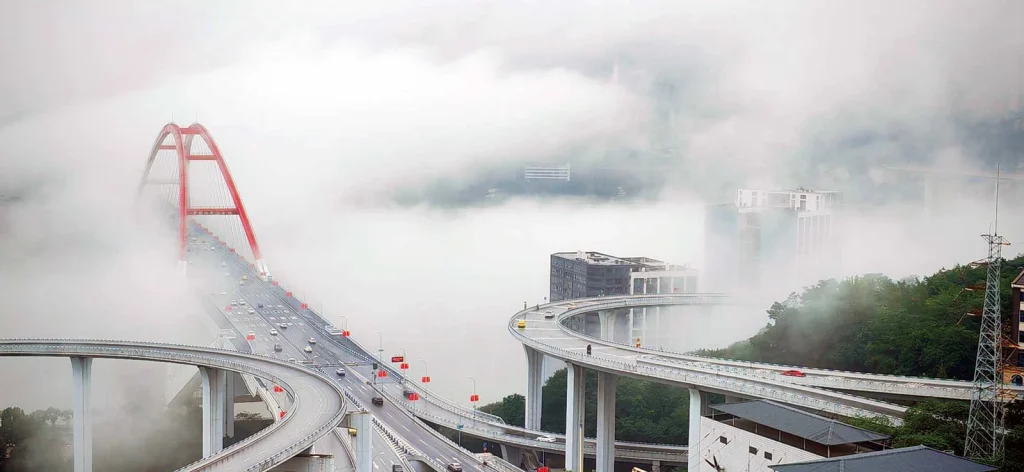
Hydrology
Chongqing’s major rivers include the Yangtze River, Jialing River, Wu River, Fu River, Qijiang River, Daning River, Apeng River, and Youshui River. The Yangtze River, the main stem, traverses Chongqing from west to east, flowing for 665 kilometers through three anticlines of Wushan Mountain and forming the renowned Qutang Gorge, Wu Gorge, and Xiling Gorge (in Hubei Province)—collectively known as the world-famous Three Gorges of the Yangtze. The Jialing River, approaching from the northwest, meanders three times before joining the Yangtze in Yuzhong District. The Wu River converges with the Yangtze in Fuling District, passing through the Libi Gorge, Wentang Gorge, and Guanyin Gorge, collectively termed the “Lesser Three Gorges of the Jialing River.”
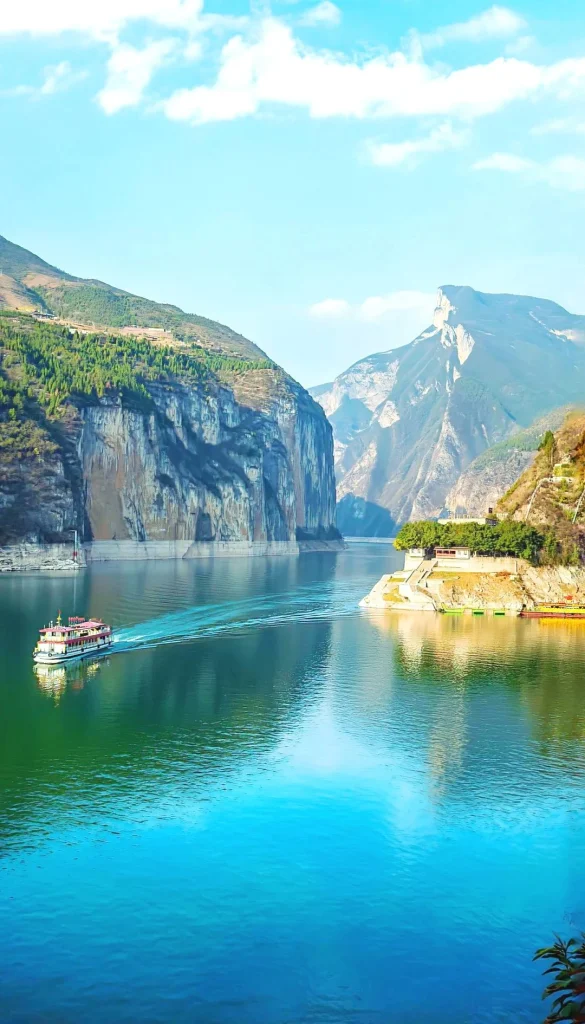
History and Culture
Chongqing is a renowned national historical and cultural city. Human habitation in the region dates back over 20,000 years to the Paleolithic Age, with denser primitive settlements emerging during the Neolithic Age. These early communities were inhabited by eight ethnic groups, including the Yi, Pu, and Ju, who collectively laid the foundations of Chongqing’s earliest civilizations.
In ancient times, Chongqing’s geographical isolation, rugged terrain, and humid climate fostered a distinctive lifestyle and customs among the Bayu people. Their traditions blended straightforwardness with impulsiveness, warmth with shrewdness, humor with rustic simplicity, earnestness with whimsy, leisure with impatience, and openness with exclusivity. Chongqing’s vibrant local operas, folk arts, paintings, handicrafts, and seasonal festivals vividly reflect the Bayu cultural ethos.
With a history spanning more than 3,000 years of urbanization and 800 years since its official naming, Chongqing embodies six key historical and cultural values:
- A model of mountainous cities in China.
- A strategic national rear center.
- A commercial hub and open port on the upper Yangtze River.
- A melting pot and communication center in southwest China’s hinterland.
- The birthplace of the Red Rock Spirit.
- A cradle of Bayu and Three Gorges cultures.
The city is rich in cultural resources that highlight traditional Bayu heritage, Ming-Qing immigration, port-city development, wartime capital history, and its role as the Southwest China headquarters.
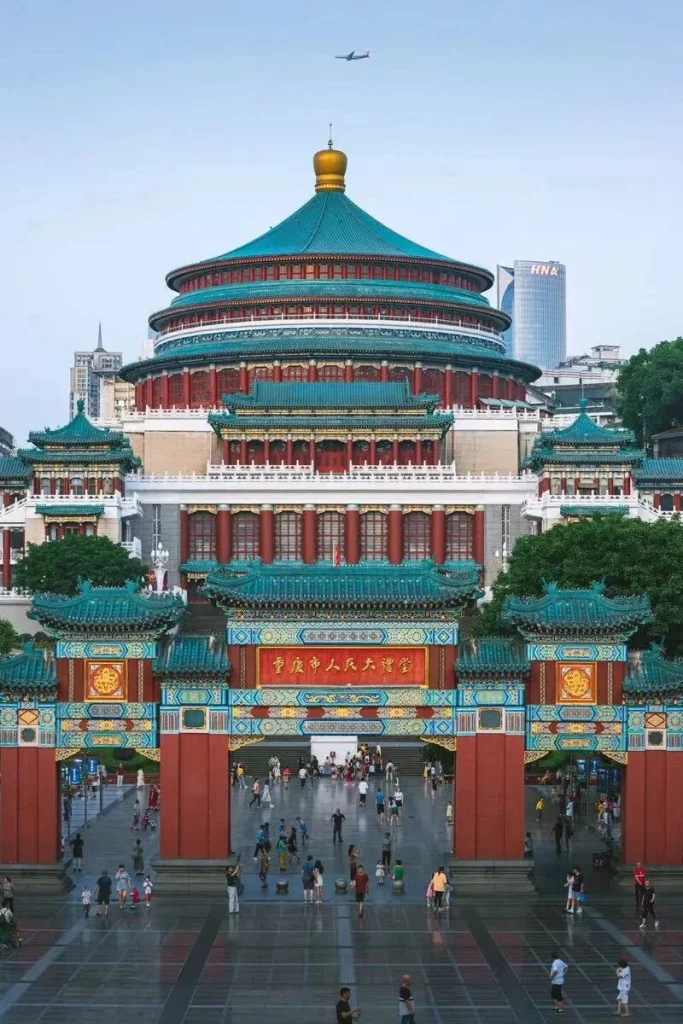
Humanities
Chongqing’s culture is predominantly rooted in Bayu Culture, which originated from the ancient Ba Culture. It represents the regional culture developed by the Ba people and the Ba Kingdom throughout history. As one of the most distinctive ethnic cultures along the upper Yangtze River, Bayu Culture was shaped by the Ba people’s life among mountains and rivers, fostering a resilient, tenacious, and fierce character. Renowned for their bravery and martial prowess, the Ba people left a legacy of cultural uniqueness. Bayu Culture, centered in Chongqing and the eastern Sichuan Basin, encompasses not only the history and culture of the ancient Ba Kingdom, Ba ethnicity, and Ba Prefecture but also the broader historical and cultural heritage of the Chongqing-centric region from the pre-Qin period through the Ming and Qing dynasties.
The Chongqing region has nurtured a rich tapestry of humanistic histories, including Bayu Culture, Red Rock Culture, Anti-Japanese War Culture, United Front Culture, Immigrant Culture, and Ethnic Culture.
During World War II, with the relocation of the National Government to Chongqing, the city became the wartime capital of the Republic of China and a hub for evacuated schools. Renowned educators, scholars, and literary figures—such as Zhang Daqian, Hu Shi, Fu Sinian, Lin Yutang, Qian Mu, Liang Shiqiu, Guo Moruo, Liu Yazi, Ma Yinchu, Tao Xingzhi, Liang Shuming, Xu Beihong, and Lao She—converged in Chongqing, establishing it as the cultural and educational center of southwest China. The Shapingba district, a cultural hub densely populated with academic institutions, earned the nickname “Cultural Dam” as a cradle of talent. Among the luminaries cultivated here were Nobel laureate Ding Zhaozhong and prominent figures like Zhu Guangya, Zhou Guangzhao, Zou Jiahua, Mao Yushi, Wu Jinglian, Ding Xuesong, and Wang Jiasheng. This era as the wartime capital laid a cornerstone in Chongqing’s cultural and historical development.
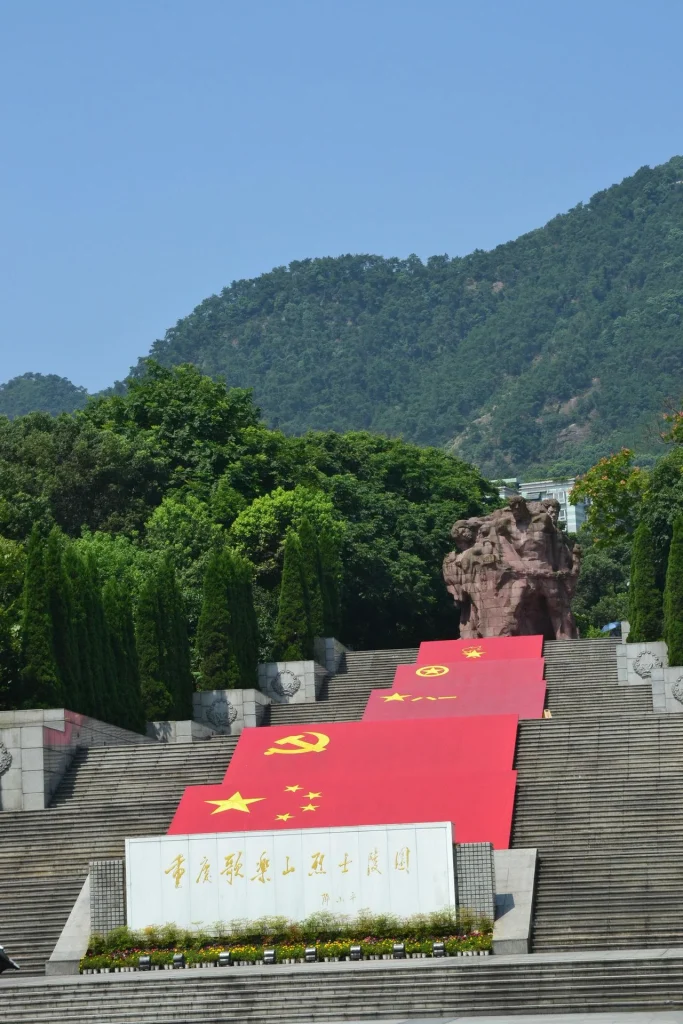
Cuisine
The culinary traditions of Chongqing are renowned for their bold use of ma (numbing spice) and la (chili heat), characterized by innovative dishes crafted from a diverse array of ingredients. Chongqing is the birthplace of hotpot, and in March 2007, it was officially named the “Hotpot Capital of China” by the Chinese Cuisine Association. Key representatives of Sichuan-Chongqing cuisine include Chongqing hotpot, jianghu dishes, boiled fish, twice-cooked pork, pickled vegetable fish, spicy chicken, springwater chicken, boiled pork slices, old duck soup, hot and sour rice noodles, fish-flavored shredded pork, pickled pepper tripe, steamed pork with rice flour, braised pork, Chongqing noodles, and Chongqing snacks.
In October 2024, the Ministry of Culture and Tourism launched the “Flavors of the Countryside” elite rural tourism routes, showcasing hidden culinary gems to the public. Chongqing featured two routes:
- “Chongqing · Savor Xiushan’s Delicacies”
This route spans Xiushan’s West Street, Hong’an Border Town, Chuanhegai, and Shiti Town. Xiushan Tujia and Miao Autonomous County, nestled in southeastern Chongqing and the heart of the Wuling Mountains at the junction of Chongqing, Hunan, and Guizhou, boasts abundant natural landscapes, rich cultural heritage, and renowned regional specialties. Notable dishes include West Street beef noodles, Hong’an pickled fish, Chuanhegai smoked pig trotters, Shiti tofu fish, Yajiang beef offal hotpot, and Gaotian spring stone frogs. - “Chongqing · Explore Youyang’s Rural Gastronomy”
This route covers Youyang’s Taohuayuan (Peach Blossom Spring) Scenic Area, Gongtan Resort, and Youshui River Bend Scenic Area. Youyang, situated at the convergence of Chongqing, Hubei, Hunan, and Guizhou at an average elevation of 800 meters, has a history spanning 2,200 years, including over 800 years as a prefecture seat and 600 years of Tusi chieftain culture. Enveloped by mountains and rivers, Youyang is a culinary paradise where each dish embodies the essence of Tujia culture. Specialties include Tujia oil buns, Tujia butter tea, Gongtan mung bean noodles, Gongtan braised pork, and fire-pit bacon.
These routes highlight Chongqing’s rural charm, where pristine landscapes and time-honored flavors intertwine to offer a taste of authenticity.
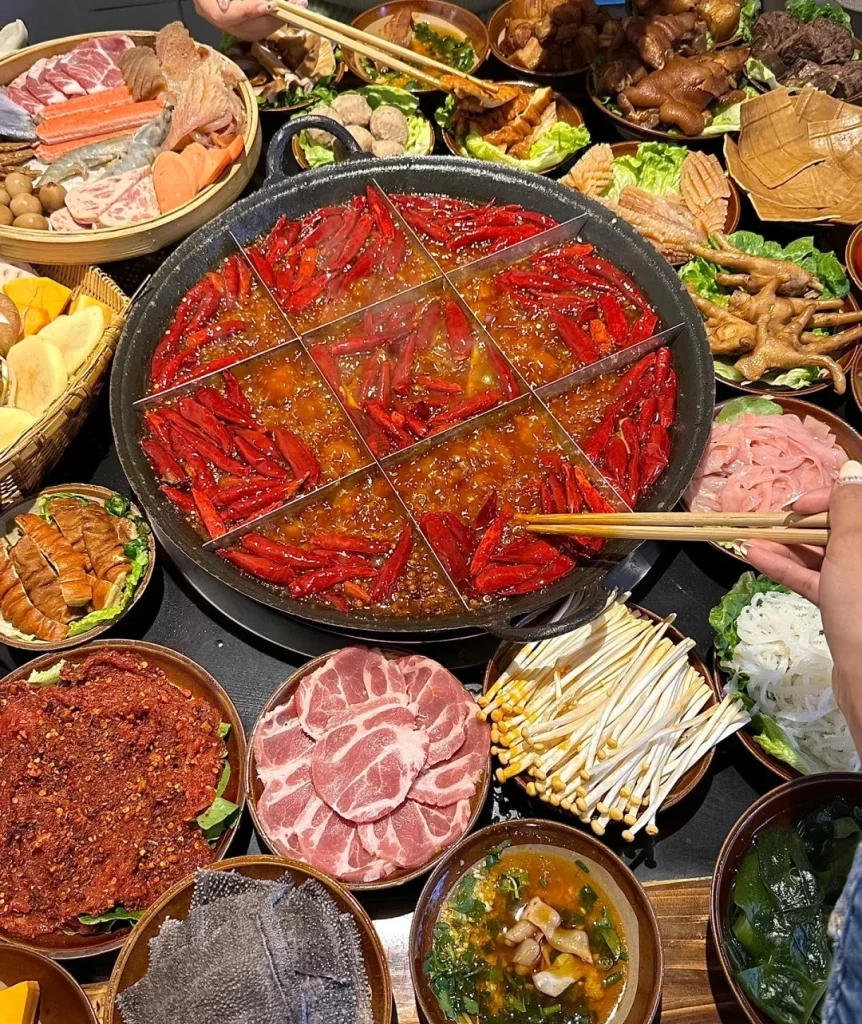
Scenic Spots and Historical Sites
Chongqing boasts a rich tapestry of natural and cultural landscapes, including mountains, rivers, forests, springs, waterfalls, gorges, and caves. The city is home to over 300 natural and cultural attractions, among which are one UNESCO World Cultural Heritage Site (Dazu Rock Carvings), three UNESCO World Natural Heritage Sites (Wulong Karst, Jinfo Mountain Karst, and Wulipo in Chongqing), six national key scenic areas, 24 national forest parks, seven national nature reserves, and 20 national key cultural relics protection units.
As of February 2024, Chongqing has 291 A-level tourist attractions, including:
- 12 AAAAA-rated (highest tier)
- 150 AAAA-rated
- 85 AAA-rated
- 43 AA-rated
- 1 A-rated
The city also has 10 geological parks, comprising 9 national-level and 1 municipal-level park.
